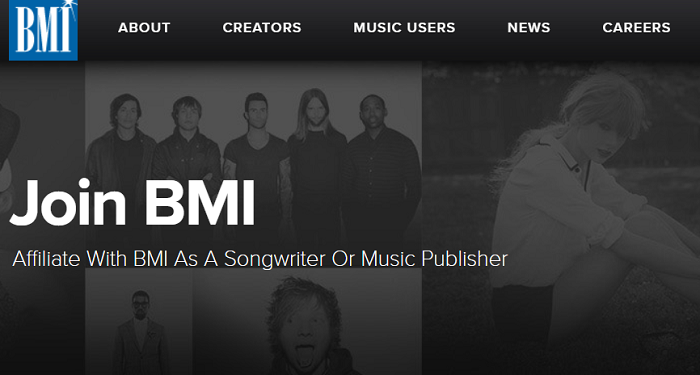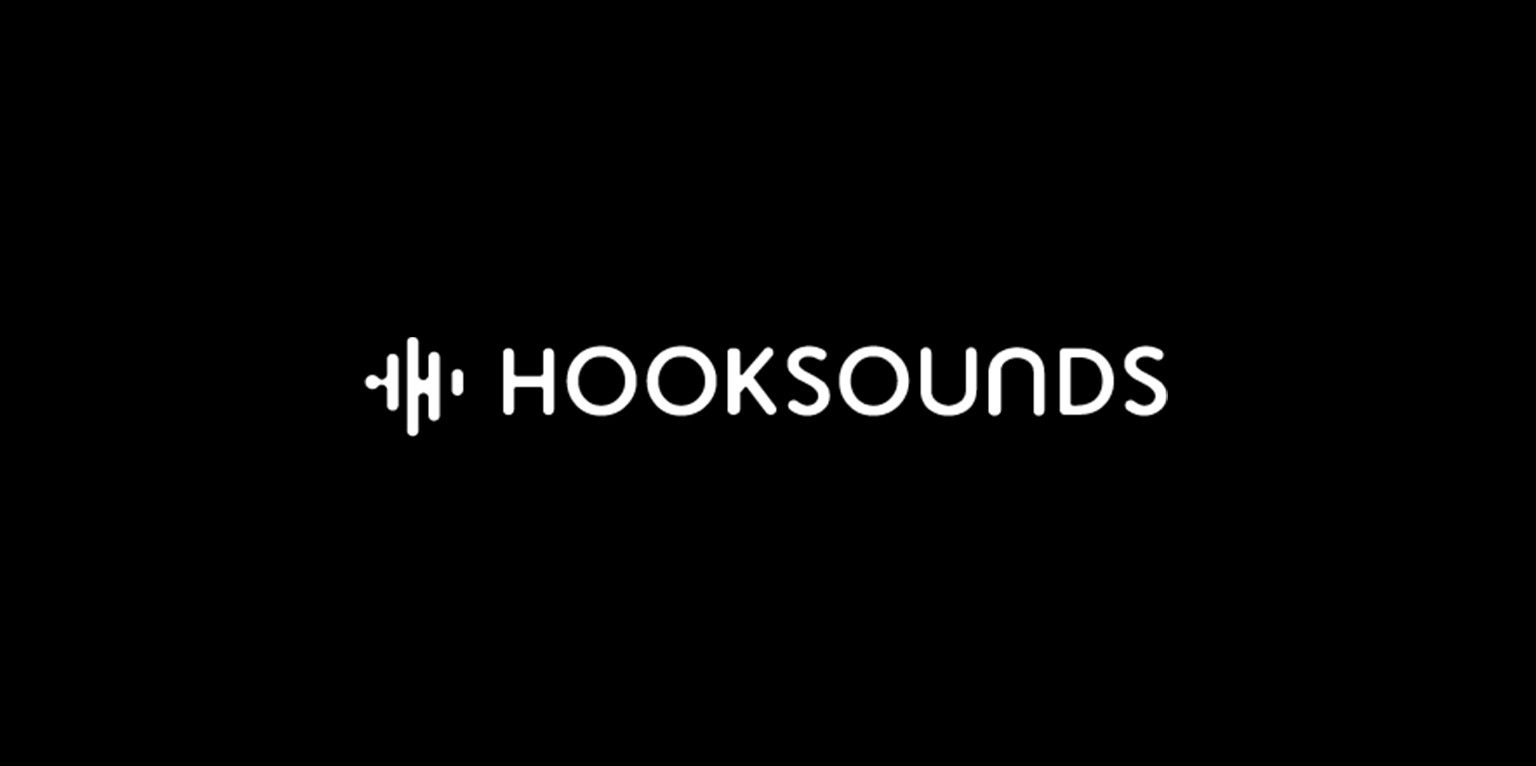If you’re an aspiring artist, you’ve surely heard of BMI music. The term is often thrown around in conversation, especially among songwriters, composers, and performers. But what is BMI music, and what importance does it serve in the world of publishing?
This article discusses everything you need to know about BMI, including the advantages of signing up with this performance rights organization.
What Is BMI Music?

BMI, also known as Broadcast Music Inc, is among the biggest performing right organizations in the US, right up there with ASCAP and SESAC. They collect license fees from businesses on behalf of songwriters, composers, and performers that use their music.
Currently, BMI represents well-known individual artists such as Taylor Swift, Rihanna, Lil Wayne, Ed Sheeran, and bands like Maroon 5, Twenty One Pilots, Fifth Harmony, and more.
What Is a Performance Rights Organization, Anyway?
Performance Rights Organizations (PROs), also known as Performing Rights Societies, are companies that provide intermediary functions to songwriters and publishers.
Its primary purpose is to track and collect performance royalties from individuals and businesses that use an artist’s music for commercial purposes. These organizations then pay the artist the revenue they collected.
In other words, PROs make sure songwriters and publishers get performance royalties when their song is played publicly on TV, a digital streaming platform, the radio, or a live venue. These platforms pay a blanket license to play all the music listed on the PRO’s catalog.
PROs then distribute royalties based on several factors, including the number of plays, the time of day the song was performed, and more.
The History of BMI: How It Became the Biggest PRO in the United States
BMI is a non-profit organization that was founded in 1939 by a group of radio industry leaders. Their rise in fame and popularity is fascinating indeed. Let’s go through the timelines together.
1930’s

It was 1939, a time of the Great Depression. Artists didn’t receive the revenues they do now, and they’d rarely get paid for recordings and live performances.
The ASCAP (American Society of Composers, Authors, and Publishers) was the only reputable Performance Rights Organization in the United States.
However, the company had substantially increased the revenue share licensees were required to pay. As a result, smaller radio stations went practically bankrupt just so they could license under the ASCAP repertoire.
Moreover, ASCAP required radio stations to pay a fixed percentage of the station’s revenue regardless of how much music the station played from its list of licensed songs.
ASCAP members were struggling as well. It was almost impossible to sign up for ASCAP because of the steep fee they charged their members to license their music.
BMI’s founders, who were part of the National Association of Broadcasters at the time, knew that the music industry was likely to fall if they left licensing to ASCAP. They had to do something and fast.
Their solution? Create a lower-cost alternative to ASCAP.
A few months after ASCAP increased its revenue cost, BMI was born, thus marking the decades-old competition between BMI and ASCAP.
1940’s

BMI was instantly recognized because of its fair business model and benefits.
By 1941, the vast majority of United States radio stations stopped renewing their ASCAP licenses and would instead sign up with BMI. They stopped playing ASCAP music entirely and heavily depended on the BMI repertoire.
BMI gave licensees the option to either buy a blanket license like ASCAP or pay only for the music they actually use. Due to BMI’s rapid increase in popularity, ASCAP decided to do the same. The decree was then supervised by the Justice Department.
Competition between BMI and ASCAP was strong. In order to take the lead, BMI specifically sought artists that ASCAP tended to dismiss or ignore. It also purchased numerous catalog rights from independent publishers whose ASCAP contacts were just on the verge of expiring.
But that’s not all.
BMI also compensated songwriters and publishers through a fixed “per performance” fee. In comparison, ASCAP had a strict two-tier payout system that discriminated against lesser-known artists.
1950’s
When the 1950s rolled around, BMI became the first-ever PRO that represented black songwriters and black genres such as blues, gospel, jazz, and rhythm and blues in the US.
It represented other “niche” genres, too, like folk, country, and Latin. Soon after, they started licensing rock and roll, as well.
At the time, ASCAP didn’t allow members of the black community or foreigners to license their songs with the organization. BMI, however, didn’t have a problem. They welcomed songwriters and producers from every culture and background.
As a result, the company became the primary licensing organization that hosted R&B and country artists, while ASCAP focused on pop artists and other well-known and “accepted” genres.
2000’s – Present Day

Today, BMI continues to be as strong and influential as it was during its launch back in 1939.
The company currently supports over 1.1 million songwriters and protects over 17 million compositions. Among them is Michael Jackson’s music catalog, Sony/ATV Music Publishing, where it features some of the late artist’s top music.
BMI has also expanded its classical music repertoire. Because of this, BMI now represents the majority of the American Academy of Arts and Letters’ prestigious members, including 31 Pulitzer Prizes for Music winners.
In 2017, BMI reportedly renewed its long-term partnership with the world’s largest music festival producer, C3 Presents.
BMI now proudly stands as one of the “Big Three’s” of the PRO music scene, along with ASCAP and SESAC.
The Difference Between BMI, ASCAP, and SESAC
BMI, ASCAP, and SESAC are dubbed as the “Big Three” PROs in the music industry.
BMI is the biggest of the three, with over 1.1 million songwriters and 17 million compositions. It’s often the first and preferred choice of many producers and song makers because of the benefits and opportunity it brings.
ASCAP vs BMI
ASCAP, on the other hand, is the oldest PRO in the US, having been founded in early February of 1914. Currently, ASCAP has over 800,000 members with over 12 million registered works. Famous members include Beyoncé, Justin Bieber, Ariana Grande, Sia, and many others.
Compared to BMI, ASCAP requires songwriters to pay a one-time registration fee to join their organization. Contracts are then renewed annually without extra cost. Publishers and publishing companies must pay a registration fee, as well, but the cost isn’t as high as BMI’s.
ASCAP pays 85% of their revenue to their members, splitting the cost evenly between publisher and writer. The company is extremely community-oriented; every several months, ASCAP offers workshops, showcases, grants, and scholarships to its members.
When terms of contract duration, ASCAP contracts are only one year while BMI is two years. If you’re not too big on commitment, you might want to consider ASCAP.
Other advantages include:
- Annual “I Create Music” ASCAP Expo
- MusicPro discounts on instrument, health, dental, and life insurances
- Music-related retail services and product discounts
- Songwriter workshops, showcase programs, and awards
- Discounts on online services (Soundfly, Daily Burn, BetterHelp)
- ASCAP Wellness Program
- Discount on travels and hotels
ASCAP pays its members in quarterly payments. The value an artist receives depends on the performance medium and type, along with the economic significance of the licensee.
SESAC vs BMI

SESAC was founded by German immigrant Paul Heinecke in 1930 in New York, making it the second-oldest PRO in the country. The company has over 30,000 registered songwriters and over 1 million compositions in its catalog.
Compared to BMI and ASCAP, SESAC membership isn’t open to just anybody. Instead, you have to receive a SESAC invitation to join their roster.
Although the company only has 30,000 members, it includes heavy-weight artists like Mariah Carey, Adele, Neil Diamond, and Bob Dylan. SESAC is extremely picky when it comes to its members, so being invited is quite an honor.
Luckily, SESAC accepts submissions from non-members. Songwriters or publishers that want to join SESAC must first go through a vetting session. Once deemed acceptable, can be invited. Once invited, users can join SESAC for free.
Similar to BMI and ASCAP, SESAC pays its members in quarterly payments; four times a year. It also gives artists the opportunity to receive monthly radio royalty payment if so desired.
Additional benefits include the following:
- Special discounts at POPmarket
- 20% discount on Legacy Learning Systems
- Discount subscription for specific publications (Billboard Publications, The Hollywood Reporter, American Songwriter Magazine)
- Discounts at MusicPro Insurance, Avis Rental Cars, Airport Parking, MasterWriter, Music Connection, Sprint, and Nero Multimedia
- Frost and NSAI Specialty Insurance Copyright Infringement Policy
- SESAC direct deposit
Advantages of Joining BMI Music

Individual benefits of the Big Three aside, what are the advantages and disadvantages of joining a PRO as an artist? Is it even worth it?
The primary purpose of Performance Rights Organizations is to track and collect performance royalties from individuals and businesses that use an artist’s music for commercial purposes. These organizations then pay the artist the revenue they collected.
PROs such as ASCAP, BMI, and SESAC pay up to 85% of the monetary value gained from said collections. The other 25% goes to administrative costs.
In comparison, Spotify pays major record companies a 50% share of all attributable streams to their artists.
Joining a Performance Rights Organization isn’t mandatory, but it’s still recommended regardless. This is especially true if you’re a small artist trying to make it big.
After all, it’s almost impossible to keep track of how many times your song is being played outside your preferred platform. PROs like BMI handle all that on your behalf by meticulously recording every instance your song is played.
Here are some other advantages of joining BMI:
Makes You Money
One of the biggest reasons why people join BMI is because the company helps you make money. You can generate a ton of cash from BMI’s performance royalties, especially if your song is broadcasted to the public.
BMI pays their members up to 85% of the monetary value gained from said performance royalties. The other 25% goes to administrative costs. In comparison, Spotify pays major record companies a 50% share of all attributable streams to their artists.

BMI’s former vice president, Tom Annastas, states that the company is firmly dedicated to paying the maximum amount of money possible to those rights they protect.
In fact, the company employees are trying to decrease their operating expenses in order to increase their songwriter’s income.
You’re owed money every time your song is played on:
- Terrestrial and satellite radios
- Public radios (including internet radio like Pandora)
- Network and cable TV shows
- Commercials
- Online streaming services (Spotify, Apple Music, Rdio, etc)
- Live venues
- Restaurants, bars, hotels, and other public establishments
If you’re a budding artist, generating a significant income from just performance royalties might be a bit challenging due to competition.
However, if your song attracts the attention of big-name networks, it’s best to make the most out of the opportunity as possible. You never know, you might just get a decent amount of plays and placements, which in turn adds up to a generous amount of revenue in the long run!
Best of all, songwriters can join BMI for free. Publishers and publishing companies must pay a membership fee of a fixed price, but it’s not as steep as most other Performance Rights Organization.
Helps Build Relationships

BMI offers workshops, conferences, and conventions. A great example is the BMI Lehman Engel Musical Theatre Workshop, which regularly launches showcases and workshops for musicians to increase their performance knowledge and promote their work.
It also trains emerging musical theatre composers, librettists, and lyricists by hosting monthly competitions and assignments. Notable participants include Neil Bartram, Robert Lopez, and Andrew Lippa.
BMI also regularly creates weekly, monthly, quarterly or annual showcases that highlight budding artists and bold new voices.
Some of the few showcases organized by BMI include:
- 8 off 8th
- Acoustic Lounge
- BMI Buzz at the Basement and Verano Alternative
- BMI/Hit Sheet Showcase
- DRINKSHOP Live!
- East Side Sounds
- Noche Mexicana
- Pick of the Month
- Unsigned Urban Showcase
These showcases help artists build genuine relationships with each other, and make it easier to connect with people within the industry.
Discount Benefits
While not as great as the aforementioned two, it’s still worth noting. BMI memberships often come with several discount offers and packages, such as free website services, trials, and even scholarships.
Some of BMI’s membership benefits include:
- Weekly, monthly, quarterly, and annual BMI showcases
- Workshops such as the BMI Lehman Engel Musical Theatre Workshop and the BMI Jazz Composers Workshop
- Panels and conventions throughout the year
- Membership discount to BMI affiliates (FedEx, UCLA Extension’s Entertainment Studies, Berklee Online)
- Discount for Hall of Fame songwriters
- BMI discounts for songwriting apps and services
Multiple Beginner Resources

If you’re a beginner and don’t quite know how to make it big in the music industry, joining a BMI might be your answer. BMI provides a ton of educational materials like blogs, videos, and FAQs on their websites.
It also has forums that help artists interact with other artists. Big-name members would sometimes pitch in and answer some of the questions left on the forums, as well.
BMI is likewise a fantastic resource for understanding topics such as copyright issues and how royalties work. Moreover, it’s a suitable starting point for those who are searching for beginner tips and tricks.
Disadvantages of Joining a Performance Rights Organization like BMI
Like any other organization, there are several advantages that come with joining PROs.
You’re Bound By Contract
Becoming a member means that you’re bound by a PRO contract. Depending on the organization, this can last anywhere between several months to years.
Therefore, if you want to switch PROs, you need to complete your contract term before being able to terminate it. If you don’t cancel your contract, it’ll automatically renew for the next term.
As with any contract, you need to understand the full terms and conditions of what you’re getting into.
Long-Term Fees

Members are required to pay an annual membership fee to continue their contracts. If you’re a big-name artist, a membership fee wouldn’t cost a thing because it’ll automatically be covered by the revenue you’re making.
However, if you’re just starting out, you might have to pay out of your pocket several times before you actually make money. Even then, it’s not always guaranteed that you’ll make the money you spent back.
Luckily, membership is free with BMI if you’re a songwriter. Even so, you won’t get the full benefits BMI has if you’re not a paying member.
PROs Only Track Performance Royalties
This means that PROs don’t track your mechanical fees, sampling royalties, sheet music royalties, and synchronization royalties.
Instead, these fees are meant to be paid by your record company (if you have one). Otherwise, you may not be able to collect these fees without copyrighting them.
Slow Payout
Most PRO companies have an average payout time of six to seven months. BMI, for instance, has a payout speed of 5.5 months while ASCAP is 6.5 months.
If you’re searching for a company that’ll pay you every month, PROs might not be for you.
Should You Join BMI Music?

PROs are more or less a necessity for songwriters and publishers. These organizations help artists make money through performance royalties, and help protect them from copyright infringement.
BMI is the biggest PRO company in the United States. It’s a smart choice for songwriters because it’s free and has a relatively decent payout speed. It also provides artists with the proper tools to help increase their exposure through conventions, showcases, and workshops.
However, if you’re a publisher living in a city with a strong ASCAP presence (e.g. New York, LA, Atlanta, Nashville) and want to save a couple of bucks in terms of membership fees, you may want to consider ASCAP instead.
SESAC is incredibly exclusive, but they’re quite efficient and they don’t require any fees whatsoever. SESAC takes care of everything for you without expecting any kind of extra compensation from your end.
Every PRO has their individual strengths and weaknesses; choose what company is best for you and read through the organization’s terms and conditions before signing a contract with them.







